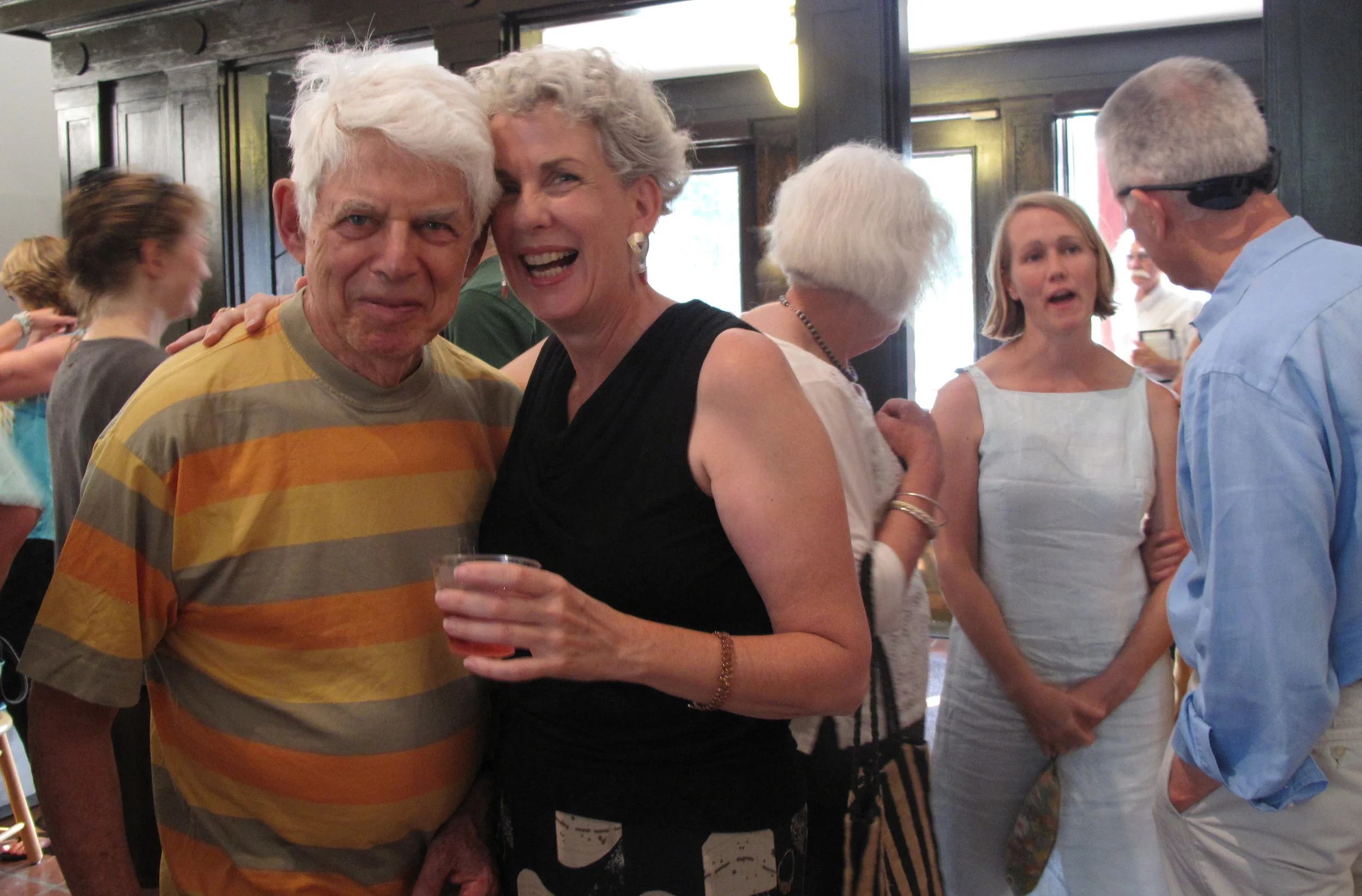“Overlooked for far too long”
Stephen Hannock is a luminist painter whose work is in the collections of the Metropolitan Museum of Art, the Whitney Museum of American Art, the National Gallery, and the Museum of Fine Arts, Boston, among others. Hannock was instrumental in the development of Figuration Never Died: New York Painterly Painting, 1950-1970, on view at BMAC October 24, 2020 - February 14, 2021. We caught up with him to find out more about the exhibition.
IMAGE:
Grace Hartigan, Giftwares (1955)
Oil and charcoal on canvas, 63 x 81 inches
Collection of the Neuberger Museum of Art
Purchase College, State University of New York
Gift of Roy R. Neuberger
BMAC: How did you and BMAC Director Danny Lichtenfeld come up with the idea for Figuration Never Died?
Hannock: I'm not sure of the exact timeline, but I believe the inception was when Al Kresch and Paul Resika were recognized at the award ceremony for the 2015 Robert De Niro Sr. Prize. The late artist’s son and namesake, actor Robert De Niro Jr., wanted to recognize the artists who had worked with his dad for so many years.
Wolf Kahn, Self-Portrait, 1959, oil on canvas, 42 x 40 inches, Wolf Kahn Studio
I first encountered Kresch, Resika, and many of the other artists in the exhibition 45 years ago, when I was apprenticed to Leonard Baskin in Northampton, Massachusetts. Wolf Kahn lived just up the road in southern Vermont. He and De Niro Sr., Leland Bell, Lois Dodd, and a handful of others were all working in a similar vein. During a time of intensely celebrated abstraction, their work was figurative, like Baskin’s, and it exploded with color.
While trying to learn more about these artists, I found that there were no books published on the New York figurative painters. This was odd, as there were plenty of publications on their Bay Area counterparts, who were active during the same period.
Several years ago, I brought this fact to the attention of De Niro Jr., and I also reached out to Leslie van Breen at The Artist Book Foundation, a nonprofit art book publisher in North Adams, Massachusetts. Leslie loved the idea of producing a book, but she thought, astutely, that the impact of a book would be more significant if it were supported by an exhibition.
Enter Danny Lichtenfeld.
A few years back, I enjoyed a terrific experience with an exhibition of my work at BMAC. I knew from that experience that Danny had an interest in mounting shows that reach beyond western New England without leaving the region in the dust. With Wolf Kahn being a neighbor and supporter of BMAC, Danny was excited about a show in Brattleboro that would introduce the first major publication on this group of artists.
Photo Credit: Erin Jenkins
BMAC: How did curator Karen Wilkin get involved?
Hannock: The simple answer is that Danny, [BMAC Chief Curator] Mara Williams, and I knew right away that there was no one better suited to illuminate that moment in New York art history than Karen. But there’s also a serendipitous set of connections that comes into play.
Back in 2011, I received a call from Gordon Faison, BMAC board member and son of the art scholar Lane Faison, my dear friend and mentor whose influence as the “Dean of the Williams College Art Mafia” was legendary. The town of Brattleboro had just been slammed by Tropical Storm Irene. Gordon asked if I'd be interested in mounting a show at BMAC that might be helpful in kicking the town’s cultural scene back into gear.
I committed to the show immediately, and when I headed over to view the space, I was completely caught off guard by the beautiful renovation of the Museum’s main gallery. I loved that the renovation retained the gallery’s view of the Connecticut River, and because of that, several of my Connecticut River oxbow compositions became the focus of the show.
So, in a sense, my connection to BMAC has to do with Lane Faison, who, as it happens, was a great admirer of Karen Wilkin. I’ll never forget an experience I had with Lane, when he enthusiastically brought an article in the New Criterion to my attention. He said the article was so good that he actually wrote a fan letter to the scholar. I’ve forgotten what the article was about, but I’ll always remember that the author was Karen Wilkin. That Lane thought so highly of Karen made a deep and lasting impression on me.
To have the opportunity, all these years later, to connect Karen with BMAC, where Lane’s son Gordon has made his mark as a trustee, is just great.
Photo credit: Erin Jenkins
BMAC: What sort of recognition do you hope the exhibition will create?
It will be a mystery for years to come why these artists have been overlooked for so long. Clearly, the white-hot light generated by the Abstract Expressionists blinded the art audience to any other form of art making during that period. But removed from that immediate glare, in San Francisco, the Bay Area figurative painters were rattling cages. Richard Diebenkorn, Wayne Thiebaud, Elmer Bischoff, David Park, Joan Brown, Paul Wonner... These artists have had volumes published about their work. Hopefully, thanks to the efforts of Karen Wilkin, The Artist Book Foundation, and BMAC, these important New York figurative painters will at long last receive proper recognition for their contributions to 20th century American painting.
Stephen Hannock in his studio








